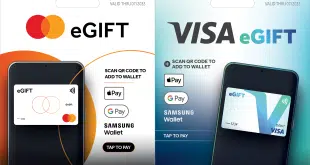To drive innovation and adoption, providers should stay close to the pain points of their customers.
To achieve mass adoption of mobile payments, retailers, banks, and vendors must be prepared to serve a radically different customer, says Souheil Badran.
Souheil Badran is senior vice president and general manager at Digital River World Payments, Minnetonka, Minn.
For payments professionals, few if any topics these days are generating as much interest and opinion as the burgeoning mobile-payments market. And no wonder. According to a Gartner report, the value of mobile-payment transactions will surpass $431 billion by 2015.
That’s a big number, yet most of us remain decidedly underwhelmed by what we’ve seen so far. Consumer adoption is slow. Outside of Starbucks’s closed-loop solution, virtually no in-market solution has achieved anything resembling scale at retail. And, with a few exceptions, the category simply isn’t doing much yet that improves customers’ experience enough for them to abandon, en masse, their still perfectly functional plastic cards.
The problem is that the payments business is wedded to the idea that change should be incremental. That makes it easier to adopt for everyone, right? But a solution that is about moving a payment from a credit card to a phone for a consumer, or shaving a point or two off a retailer’s transaction fees, isn’t going to trigger that mass migration to mobile.
We have already seen a number of mobile wallets fail. To drive innovation and adoption, providers should stay close to the pain points of their customers, especially as consumers’ expectations for mobile channels continue to rise.
The next generation of customers has a radically different approach to spending and financial decision making. They are empowered by mobile devices and shaped by a childhood full of disruptive technologies.
The Lure Is Loyalty
Mobile payments provide an unprecedented opportunity for merchants to better understand their business and how consumers interact with their products, as well as evaluate behavior via analytics and drive retention and loyalty. Put another way, this is something that ought to be transformational, not incremental.
These are some of the most exciting ways mobile is being used currently:
Mobile card readers: These are some of the few players in mobile payments that can already claim to have revolutionized the customer experience for any number of small merchants, taxi services, and other places that typically wouldn’t be able to use sophisticated point-of-sale equipment. Mobile card readers will remain a big business, and competition is likely to heat up here as the early success of leaders, such as Square Inc., attracts more investment.
Starbucks: The coffee giant—a major Square investor itself—is widely recognized as the mobile-payment category’s greatest success to date. And for good reason. Consumers are reportedly using its mobile app to pay more than 2 million times each week. The lure is loyalty, not speed. The repeat usage is driven more by free birthday drinks, rewards points, and song downloads than it is by the promise of shaving a few seconds off of what was already a quick transaction (depending on how fast one can say, “Soy Chai Skim Latte.”).
Nordstrom Inc.: Nordstrom is not typically seen as a mobile-commerce player, but that’s precisely the point. The famously customer-centric retailer recently merged its e-commerce and in-store payments functions through mobile point of sale, not just blurring the lines between those experiences, but in many ways eliminating them. Using a tablet, a scanner, and a card reader, employees are able to check customers out anywhere in the store, eliminating checkout lines that once cost the company transactions. That’s a revolutionary mindset at work, and it’s one we fully expect—and hope—that others will follow.
Merchant Customer Exchange: MCX, the coalition of more than 30 huge retailers led by the likes of Wal-Mart Stores Inc. and Target Corp., doesn’t yet have a product in the market. But its presence in so many national locations gives it two things no one else in the category has: (1) significant retail scale, and (2) the opportunity to integrate successful retailer loyalty programs that are already bringing consumers and merchants closer. It remains to be seen whether this group can overcome the obstacles inherent in coalition governance to actually deliver, but its game-changing potential is undeniable.
Chase and BMO Harris: Financial institutions, like JPMorgan Chase & Co. and BMO Harris, have heavily invested in mobile solutions that allow consumers to easily navigate their accounts and further promote loyalty to their brands. In addition to cash withdrawals, users can conduct most of their financial transactions, including depositing checks, paying bills, transferring money, locating ATMs, and contacting bank representatives for any additional needs, all through their mobile app.
Make It Easy
For merchants trying to determine what all this means for them, Nordstrom’s lesson is probably the most immediately valuable. If anything about your e-commerce experience is making mobile transactions difficult, it may be hurting your business already and almost certainly will down the road.
Everyone should begin cutting down on the number of clicks needed to buy, either through payment tokens or stored account information. We also push our clients to incorporate responsive design into all e-commerce pages. These adjust automatically to different browser frames and sizes, to create a seamless experience whether you’re sitting at a desktop or on a smart phone.
The mobile-payments world may not be changing as fast as we thought it might, but it is changing. While it is critical for all payments and marketing professionals to stay prepared, it is more crucial than ever to make sure that you understand the segment, consumer, or target market that you are serving and that you provide the seamless and customized experience they expect.
This will be a lucrative space as long as the players in it are prepared to introduce transformative—not merely incremental—change.





